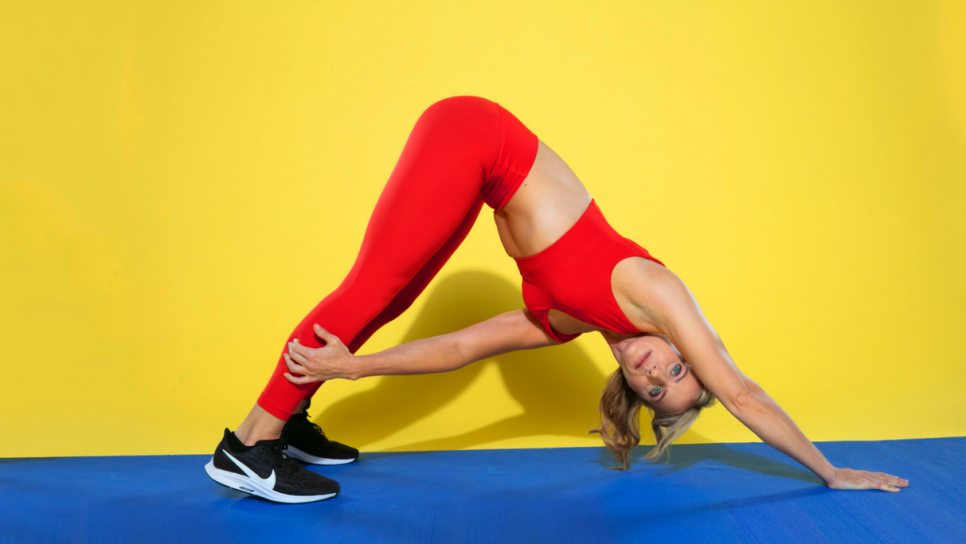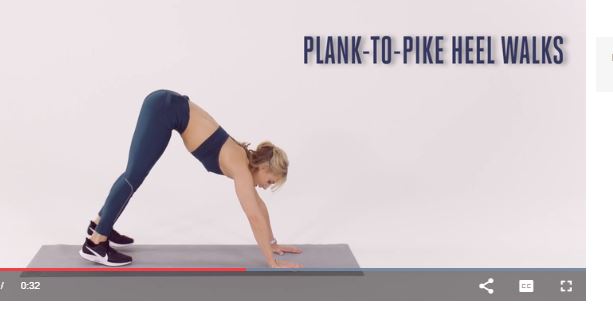FITNESS
4 yoga-based golf exercises to prevent early extension and improve rotation

It's a question often asked of fitness trainers: Is yoga any good for golf? The short answer: Yes. The longer answer: Yes, but if you want to really get the most out of yoga exercises as a golfer, it's much better to modify the traditional poses to better address the multiplanar aspect of the swing.
Golf Digest Certified Fitness Trainer Jennifer Fleischer is a big believer in a modified golf-fitness workout inspired by yoga—so much so that she did an entire golf workout based on this concept.
"It's Better than Yoga—literally," says Fleischer, one of Golf Digest's 50 Best Golf-Fitness Trainers in America. Fleischer trains golfers virtually and from her studio in the San Francisco Bay area. "Yoga provides strength, stability, mobility, all the foundational blocks any golfer needs. But when you address the prime movers of the golf swing, it's always best to get more specific with the exercises you do."
Taking this from concept to program, Fleischer used one of the most classic yoga poses—downward dog—and created four variations that address several needs of golfers. Follow this circuit, and you'll find newfound ability in your ankles, hamstrings, hips and mid-back to do what they're supposed to do in a proper golf swing.
1. PLANK-TO-PIKE HEEL WALKS
From the traditional downward-dog position, walk your feet toward your hands as far as you can, then walk them back until you’re in the start position of a push-up. From there, drive your heels and butt into the downward-dog position, and repeat the process. Do this six to 10 times.
The benefit: Improves dorsiflexion (think raising your toes toward your shin) and ankle mobility in general, which is key to preventing early extension (straightening of the body) in the downswing.
2. PLANK-TO-PIKE ANKLE STRETCHES
From the start position of a push-up, turn your toes in on each foot and then move into the traditional downward-dog position. Return to the push-up start position and repeat for three reps. At the end of the sixth rep, change to a toes-out position, and repeat the exercise three times. Now change to a position where you’re resting on the outside edges of the feet and repeat three times. Finally, and this is the hardest version, adjust your feet so you’re favoring the inside edges and repeat three times.
The benefit: Improves the lateral and rotational movement of the ankles in the golf swing. Good mobility in these planes of motion allows for energy transfer from the ground up, helping you to rotate your body around a fixed point and generate lateral and rotational power.
3. PLANK-TO-PIKE FIGURE-FOURS
From the start position of a push-up, back into a downward-dog pose, then pull one knee up toward your chest and turn your shin inward so it's resting on top of the other leg, above that knee. Now lean back slightly feeling the figure-four stretch. Return to the start and switch leg positions for another stretch. Hold each for the length of a long breath. Repeat two times.
The benefit: Improves internal and external rotation of the pelvis, which is crucial to making a synchronized and powerful downswing—as well as maximizing the energy you can create and store in the backswing.
4. PLANK-TO-PIKE REACH-THROUGHS
From the start position of a push-up, back into a downward-dog pose and then reach under and across your body with one arm, grabbing the opposite leg’s calf. Return to the start and repeat with the opposite arm and leg. Do six to 10 reps. If you can’t quite reach the calf, that’s OK. Just reach as far as you can without feeling pain.
The benefit: Improving the rotational function of the mid- and upper-back muscles to provide the proper movement of the torso in the backswing and through-swing—especially from a stable base.







